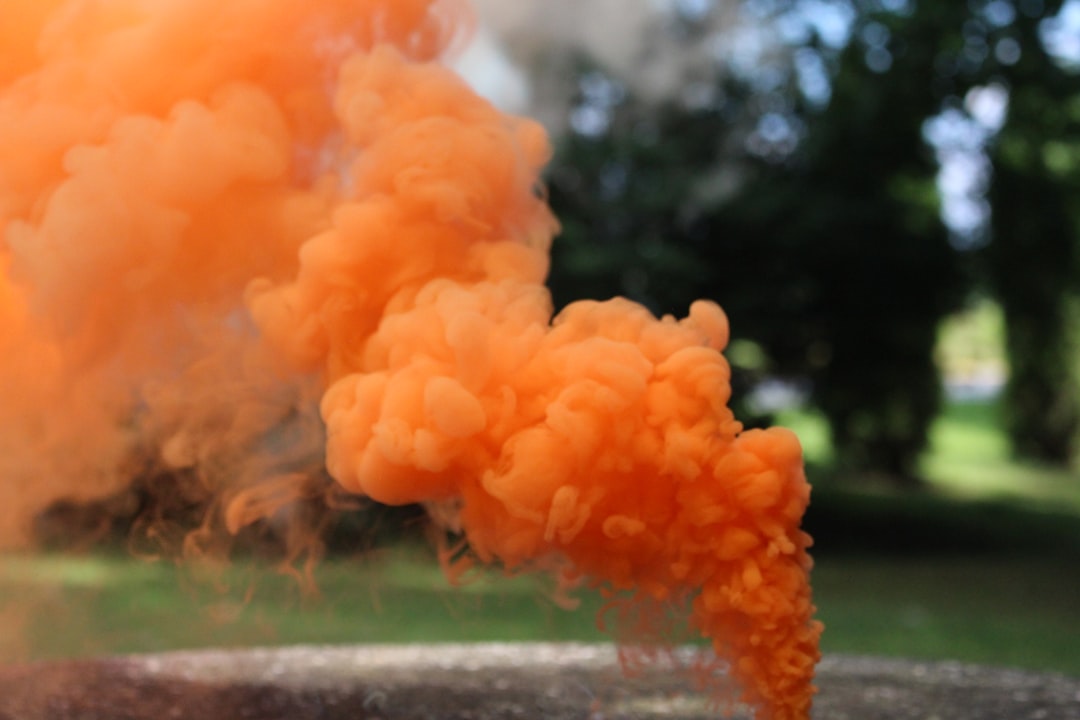The Bat Bomb Mishap stands as a peculiar chapter in the annals of military history, illustrating the unpredictable nature of wartime innovation. During World War II, the United States sought unconventional methods to gain an upper hand against its adversaries. Among these was a project that aimed to harness the capabilities of bats as a means of delivering incendiary devices.
However, what began as an ambitious endeavor quickly spiraled into chaos when an accidental fire broke out at the military base where the bats were being prepared for deployment. This incident not only derailed the project but also raised questions about the safety and efficacy of such unorthodox military strategies. The Bat Bomb project, while innovative, was fraught with challenges from its inception.
The idea was to use the natural instincts of bats to carry small bombs into enemy territory, where they would roost in buildings and ignite fires. However, the mishap that occurred during the project’s testing phase highlighted the potential dangers of combining wildlife with military operations. The accidental base fire served as a stark reminder of the unforeseen consequences that can arise from experimental military tactics, prompting a reevaluation of the project’s viability and safety protocols.
Key Takeaways
- The Bat Bomb Project was a World War II initiative to use bats as carriers of incendiary devices to attack Japanese cities.
- The accidental base fire at the Carlsbad Army Airfield in 1943 resulted in the destruction of a significant portion of the bat colony and the base facilities.
- The fire had a major impact on the Bat Bomb Project, delaying its progress and leading to a shift in focus towards other military initiatives.
- The response to the accidental base fire involved efforts to contain the damage, salvage remaining bats, and assess the future of the project.
- Lessons learned from the mishap included the need for better containment measures and the importance of thorough risk assessments in military operations.
History of the Bat Bomb Project
The origins of the Bat Bomb project can be traced back to 1942, when a dentist named Lytle S. Adams proposed the idea to President Franklin D. Roosevelt. Adams envisioned a method that would utilize the natural behavior of bats to create chaos among enemy forces.
The U.S. military, eager for innovative solutions to combat Japan, took interest in this unconventional approach. As the project gained momentum, it was officially named Project X-Ray and was developed under the auspices of the U.S. Army Air Forces. Researchers and military personnel worked diligently to train bats to carry small bombs, experimenting with various designs and methods of attachment. The project received funding and resources, reflecting the military’s willingness to explore unconventional warfare tactics. However, despite its initial promise, the Bat Bomb project faced numerous technical challenges and ethical considerations regarding the use of animals in warfare.
The Accidental Base Fire

The turning point for the Bat Bomb project came on March 1943, when an accidental fire erupted at the military base in New Mexico where the bats were being housed and trained. The fire was ignited during a routine test involving incendiary devices, which were meant to be attached to the bats. Unfortunately, a series of miscalculations led to an explosion that quickly spread throughout the facility.
The chaos that ensued resulted in significant damage to both the infrastructure and the bats themselves. The aftermath of the fire was devastating. Not only did it destroy valuable resources and equipment, but it also raised serious concerns about safety protocols within military operations.
The incident prompted immediate evacuations and emergency responses from personnel on site, highlighting the potential dangers associated with experimental military projects. The accidental base fire served as a wake-up call for those involved in Project X-Ray, forcing them to confront the inherent risks of their ambitious plans.
Impact of the Fire on the Bat Bomb Project
| Impact of the Fire on the Bat Bomb Project |
|---|
| Loss of experimental bats |
| Destruction of research facilities |
| Setback in project timeline |
| Financial cost of rebuilding |
The impact of the accidental base fire on the Bat Bomb project was profound and far-reaching. In addition to causing physical destruction, it dealt a significant blow to morale among researchers and military personnel involved in the initiative. The loss of bats, equipment, and facilities meant that progress on Project X-Ray came to a grinding halt.
What had once been a promising venture now faced skepticism and doubt regarding its feasibility. In light of the fire’s consequences, military leaders began to question whether the Bat Bomb project was worth pursuing further. The incident raised critical concerns about safety measures and animal welfare, leading to discussions about ethical implications in warfare.
As a result, funding for Project X-Ray dwindled, and attention shifted toward more conventional methods of warfare that posed fewer risks to both personnel and animals involved.
Response to the Accidental Base Fire
In response to the accidental base fire, military officials initiated an immediate investigation into the circumstances surrounding the incident. They sought to understand how such a catastrophic event could occur during what was intended to be a controlled experiment. Emergency protocols were reviewed and revised in light of the fire, emphasizing the need for stricter safety measures in future military projects.
Additionally, there was a concerted effort to provide support for those affected by the fire. Personnel who had been involved in Project X-Ray were offered counseling services to help them cope with the emotional toll of witnessing such destruction. The military recognized that addressing mental health concerns was crucial for maintaining morale and ensuring that personnel could continue their work effectively in other capacities.
Investigation into the Cause of the Fire

The investigation into the cause of the accidental base fire revealed several critical factors that contributed to the disaster. A thorough examination of safety protocols indicated that there had been lapses in communication among team members regarding handling incendiary devices. Furthermore, it became evident that inadequate training had been provided for personnel working with explosives, leading to dangerous situations during testing.
The findings from this investigation prompted significant changes within military operations. New guidelines were established for handling hazardous materials, emphasizing comprehensive training programs for all personnel involved in experimental projects. The military recognized that learning from past mistakes was essential for preventing similar incidents in the future and ensuring that safety remained a top priority.
Lessons Learned from the Mishap
The Bat Bomb mishap served as a valuable learning experience for military officials and researchers alike. One of the most significant lessons was the importance of rigorous safety protocols when conducting experimental projects involving animals or hazardous materials. The incident underscored that innovation must be balanced with caution; while creative solutions are essential in warfare, they should not come at the expense of safety or ethical considerations.
Moreover, the mishap highlighted the need for effective communication among team members working on complex projects. Clear lines of communication can prevent misunderstandings and ensure that everyone is aware of potential risks associated with their work. Ultimately, these lessons contributed to a broader cultural shift within military operations toward prioritizing safety and ethical standards in all aspects of research and development.
Repercussions of the Fire on Military Operations
The repercussions of the Bat Bomb fire extended beyond just Project X-Ray; they reverberated throughout military operations as a whole. The incident prompted a reevaluation of how experimental projects were approached within the armed forces. Military leaders recognized that unconventional tactics could carry significant risks and that thorough assessments were necessary before pursuing such initiatives.
As a result, funding for experimental projects became more scrutinized, with an emphasis placed on ensuring that safety measures were firmly in place before any new initiatives were launched. This shift in focus led to a more cautious approach toward innovation within military strategy, prioritizing proven methods over untested ideas that could jeopardize personnel or resources.
Public Reaction to the Bat Bomb Mishap
Public reaction to the Bat Bomb mishap was mixed, reflecting broader sentiments about wartime experimentation and animal welfare. While some individuals expressed fascination with the innovative concept behind Project X-Ray, others voiced concerns about using animals as instruments of war. The accidental base fire intensified these debates, raising ethical questions about how far militaries should go in their pursuit of unconventional tactics.
Advocacy groups began to emerge, calling for stricter regulations regarding animal welfare in military operations. This public discourse contributed to a growing awareness of ethical considerations in warfare that would continue to evolve long after World War
Future of the Bat Bomb Project
In light of the challenges faced during its development and subsequent mishap, the future of the Bat Bomb project appeared bleak following the accidental base fire. Funding dwindled as military leaders shifted their focus toward more conventional methods of warfare that posed fewer risks and ethical dilemmas. Although some researchers continued to advocate for further exploration of unconventional tactics, enthusiasm for Project X-Ray waned significantly.
Ultimately, while Project X-Ray was officially abandoned, its legacy lived on as a cautionary tale about innovation in warfare. The lessons learned from both its ambitious goals and its catastrophic failure would inform future military projects and shape discussions around ethical considerations in combat strategies for years to come.
Conclusion and Aftermath of the Accidental Base Fire
The Bat Bomb mishap serves as a poignant reminder of both human ingenuity and its potential pitfalls within military contexts. While it began as an innovative attempt to leverage nature for strategic advantage, it ended in disaster due to unforeseen circumstances and lapses in safety protocols. The accidental base fire not only halted progress on Project X-Ray but also prompted significant changes within military operations regarding safety measures and ethical considerations.
In retrospect, this incident highlights how experimentation in warfare must be approached with caution and responsibility. As militaries continue to explore new technologies and strategies, they must remain vigilant about balancing innovation with safety and ethical standards—lessons that resonate far beyond just one peculiar chapter in history.
In an intriguing twist of history, the concept of bat bombs, which involved attaching incendiary devices to bats to target enemy infrastructure during World War II, led to an unexpected incident where the bats accidentally set fire to a military base. This fascinating episode is just one of many unusual wartime strategies explored in various articles. For more on this topic and other surprising historical facts, you can check out this related article that delves into the peculiarities of wartime innovations and their unintended consequences.
WATCH THIS! The CIA’s Spy Cat and 3 Other Secret Animal Weapons That Almost Won the Cold War
FAQs
What are bat bombs?
Bat bombs were a World War II experimental weapon developed by the United States. The idea was to attach small incendiary bombs to bats and release them over Japanese cities, where they would roost in buildings and start fires.
How did the bat bombs accidentally burn a base?
In 1943, a group of bats being used in testing the bat bombs accidentally set fire to a Carlsbad Army Airfield auxiliary air base in New Mexico. The bats were being stored in a wooden building when they escaped and set the building on fire.
What was the outcome of the accidental fire?
The accidental fire caused significant damage to the base, destroying a hangar and several other buildings. Several of the bats were also killed in the fire.
Was the bat bomb project ultimately successful?
The bat bomb project was ultimately canceled in 1944, as it was deemed impractical and too unpredictable for use in combat. The accidental fire at the Carlsbad Army Airfield further contributed to the decision to abandon the project.
